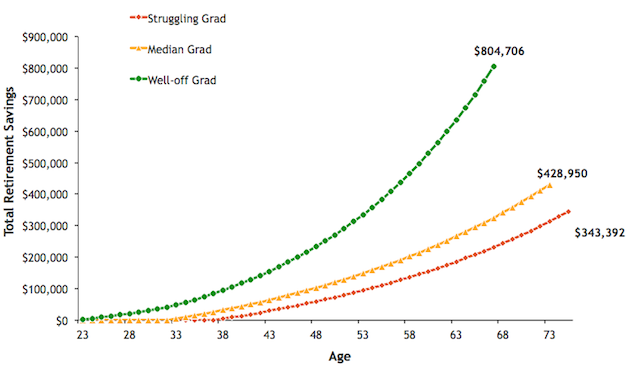Study 9 in 10 Americans Underestimate Their Hidden 401(k) Fees
Post on: 2 Август, 2015 No Comment

by Susan Lyon
April is National Financial Literacy Month – but do you know what’s hiding in your retirement nest egg?
Most Americans do not. NerdWallet Investing finds that the overwhelming majority of people dont know the full extent of the 401(k) fees they’re being charged, with many underestimating their total lifetime fees to the tune of $150,000 or more.
Key Findings:
- There are at least 28 types of fees to watch out for in your 401(k) : A funds expense ratio only tells part of the story there are several other costs stemming from the plan provider and from the mutual fund itself investors should be aware of. (See fees table below.)
- 9 in 10 Americans severely underestimate their 401(k) fees: NerdWallet surveyed over 800 Americans to find that 92.6% of American adults have no idea just how big their cumulative 401(k) related fees are – to the tune of over $150,000.
- Actively managed mutual funds underperform index funds due to high fees: If you have several actively managed funds in your 401(k), you may want to reconsider. Our mutual fund study finds that over the last 10 years, index funds outperformed actively managed mutual funds by 0.80% annually. Although actively managed mutual funds outperformed the index by 0.12% before fees, fund managers charged more in fees than the value they created.
Knowledge of these fees is critical because they can eat away at large amounts of families’ savings over time. Just how much can these fees add up over time? A retirement savings model by the think tank Demos calculated that, over a lifetime, all 401(k)-related fees can cost a median-income two-earner household almost $155,000 – almost a third of their total investment returns.

Meanwhile, a case study from the U.S. Department of Labor finds the potential for staggering losses in savings due to these fees:
“Assume that you are an employee with 35 years until retirement and a current 401(k) account balance of $25,000. If returns on investments in your account over the next 35 years average 7 percent and fees and expenses reduce your average returns by 0.5 percent, your account balance will grow to $227,000 at retirement, even if there are no further contributions to your account. If fees and expenses are 1.5 percent, however, your account balance will grow to only $163,000. The 1 percent difference in fees and expenses would reduce your account balance at retirement by 28 percent .”
When it comes to retirement planning, most people remain in the dark about how many fees their 401(k) providers are charging them – and just how much money they are losing as a result.
The Expense Ratio and Beyond: Fees to Look For
Where are all these fees coming from, and how can those saving for retirement minimize the expenses eating away at their returns? New Department of Labor regulations set in 2012 mean that all of your 401(k) fees are disclosed in your annual prospectus statement. The problem? Few people understand these fees and it’s very hard to gauge whether or not you’re being given a good deal without also being given industry averages for context and comparison. In addition, many don’t even know that 401(k) providers charge fees at all; a 2011 AARP survey found that 7 out of 10 of 401(k) holders didn’t know they were paying any fees to their 401(k) plan providers.
The expense ratio, which measures a fund’s total annual operating expenses, is the most well known fee you will encounter in your fund selection process, but it would be a mistake to believe this is the only fee you’re being charged within your 401(k) plan. Expense ratio is the fee displayed most prominently by each mutual fund because these types of fees do not vary much year to year; this is a static fee listed in each fund’s annual report.
While fee structures vary widely from plan to plan, the following three-layer 401(k) fee structure is most standard. The first two fee types are associated with the funds within your plan, while the plan level fees consist of the fees and costs of the 401(k) plan provider.
- Expense Ratio: The expense ratio associated with each mutual fund is probably the most cited fee you’ll see, but it only tells part of the story. It measures a fund’s total annual operating expenses.
- Other Mutual Fund-Level Fees. While the expense ratio encapsulates many of the costs of investing in a fund, there are also other mutual fund-level costs of purchasing a fund, as well as the trading costs that come with it.
- Plan-Level Fees. These are the fees of the 401(k) plan providers and administrators. These are the costs of keeping your company’s 401(k) plan up and running, as well as any investment and service fees.
This is the full list of fees you can expect to see, and the rough averages you can expect each fee to take of your returns:
Breakdown: 3 Layers of Fees in a 401(k)














